

Carl Barks worked his entire life. As a child, as a man and even when he was retired, he was employed by someone. In Merrill, Oregon, where he was born, he had his first job when he was a mere boy until he left the homestead at age seventeen. Below is a chronological listing of Barks' numerous occupations.
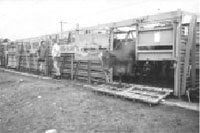 Early Twentieth Century Cattle Train |
1908-1911 When the farm failed, Barks' father William got a job at the new railroad station in the neighbouring town of Midland. He had realized that there was a future in railroads, and both he and his boys were employed with the cattle transports feeding the livestock in the corrals before moving them down the line for slaughtering. |
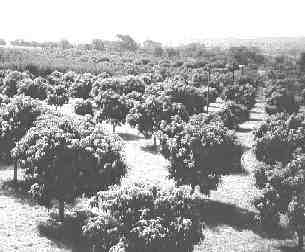 Typical Plum Orchard |
1911-1912 Years before, Barks' father had spent a fruitful time in California. One day he took the whole family with him to Santa Rosa where they started working in a large plum orchard. Unfortunately, those were the worst years within memory of man for harvesting plums, and the small family was forced to return to Merrill. |
1912-1918 Carl spent several years helping at the homestead. It wasn't until the USA joined World War I in 1916 that he began to see the see some economic opportunities. All the farmhands in the neighbourhood were drafted, and Carl - who was just 15 at the time - was too young to go. So he earned 5 dollars a day as a farmhand at the surrounding ranches. |
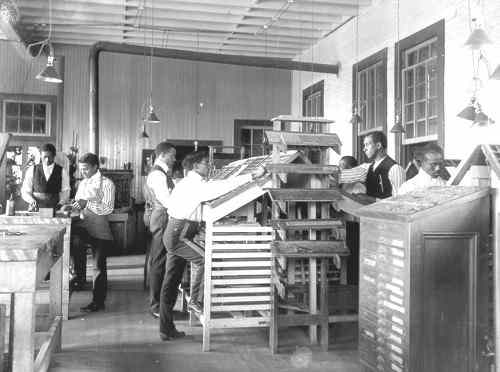 Early Twentieth Century Printshop |
1918-1923 As the war came to an end, Carl found himself unemployed because all the farmhands returned to their jobs and since the family homestead could not feed another person, he decided to pack his gear and leave. He went to San Francisco where he hoped to sell some of his humorous drawings. Instead he got a job as an errand boy at a printshop. The editors of the local newspapers did nothing but look at his drawings but since the regular cartoonists were returning from the war, just as the farmhands were, the 'good' wartime was over for him. |
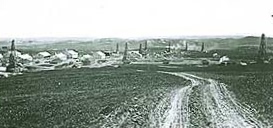 The Oilfields in Roseville |
1923 It was a turbulent year
for Carl. He was sick and tired of his job, and his
drawings were not accepted by any editors. Discouraged,
he once again returned to the family in Merrill. But the
whole area was suffering from drought. Carl went off
again. |
The assembly hall in 1923 |
1923-1928 He had an acquiantance got
him up for a job at the railroad junction in Roseville,
California. Pacific Fruit Express had large facilities
there manufacturing and repairing train wagons. Barks'
job was to repair the undercarriages and wheels for the
many wagons. And he hated it... |
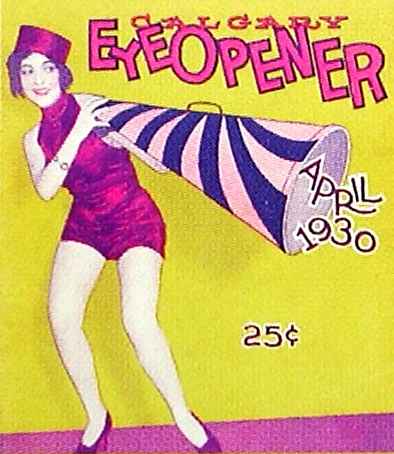 Calgary EyeOpener from 1930 |
1928-1935 Barks had
been unsuccessfully trying to sell his cartoons to
local newspapers. Then he heard of a magazine
called Calgary EyeOpener in Minneapolis in the distant
state of Minnesota. The owner, Henry Meyer, had bought a
run-down company with an inept staff, but with Barks he
managed to turn things around. |
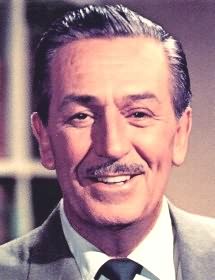 Walt Disney |
1935-1942 After this bad experience
he looked for something more secure. The USA was going
through the depression during which anyone would be happy
to have a steady job. An ad in the paper caught his eye.
Disney's was looking for new employees. After completing a few art courses at the company, he started as an in-betweener at both the short cartoons and the long animated feature films. Luckily for him - and for Disney's - he was soon transferred to the story department where he could really use his talents for dreaming up good stories. During the time at the Disney Studios, Barks developed into a brilliant storyteller and sketch artist. When he left after 7 instructive years, those qualities stayed with him. |
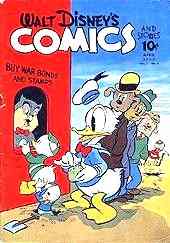 WDCS31 - the First Issue with Barks-material |
1942-1966 Barks had three good
reasons for leaving the secure job at Disney's for a
significantly less certain one at his next - and last -
employer, Western Publishing, who had a branch office in
Los Angeles. From then on, Barks worked as a duck artist from his home in San Jacinto. This was quite unprecedented for Western - but both parties soon found it to be a fine arrangement. Barks did not have much contact with the different editors at Western but one of them stood out. It was Eleanor Packer who was known as a stern lady but she had a lucky hand in running the business. Barks continued happily at Western until he retired in 1966 after almost three decades of fruitful work. |
1966-2000 Barks did not by any means relax during his golden years. He was used to working and he enjoyed it. However, after he retired, he was totally free to decide what to do and he earned big bucks for doing it. At last he had become his own employer... |
| http://www.cbarks.dk/THEEMPLOYERS.htm | Date 2002-10-12 |